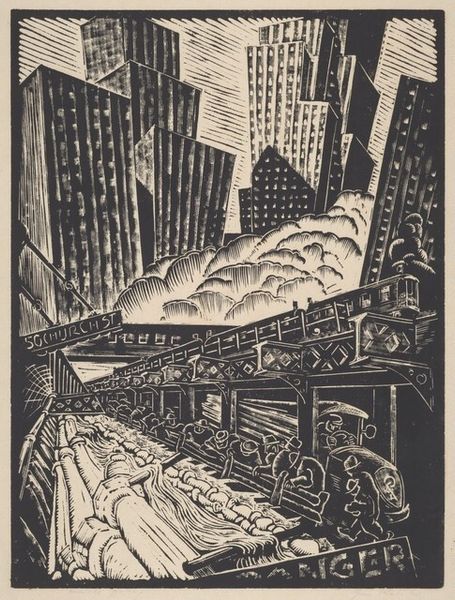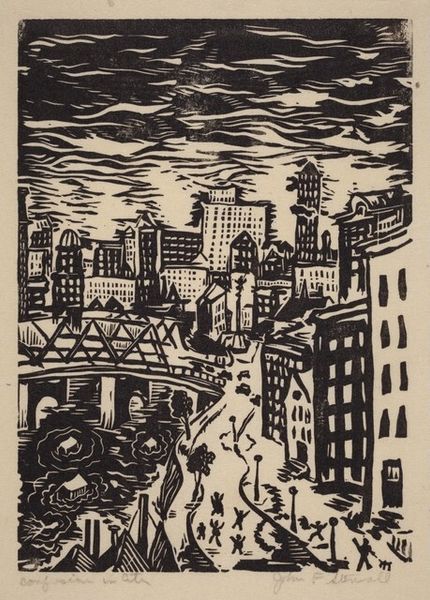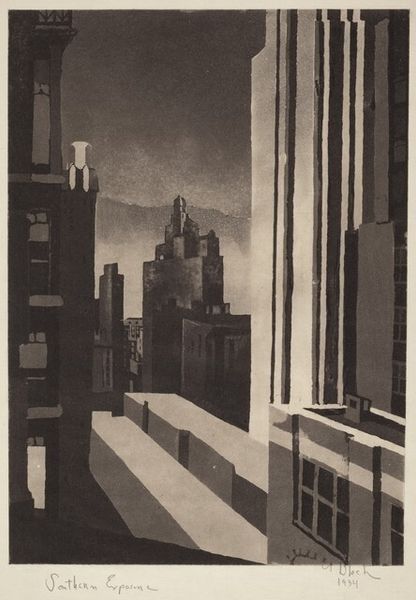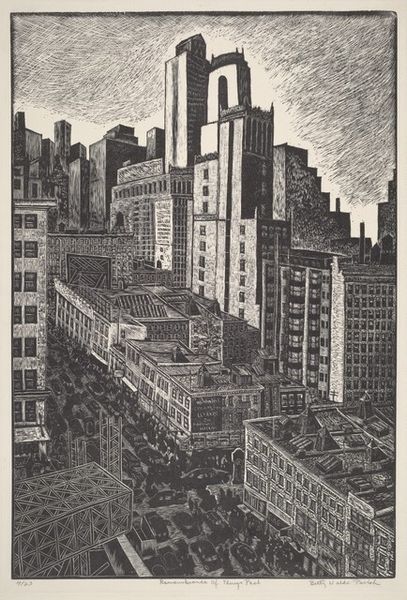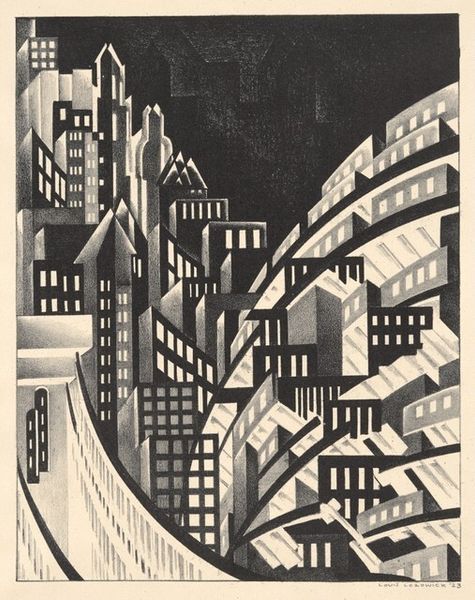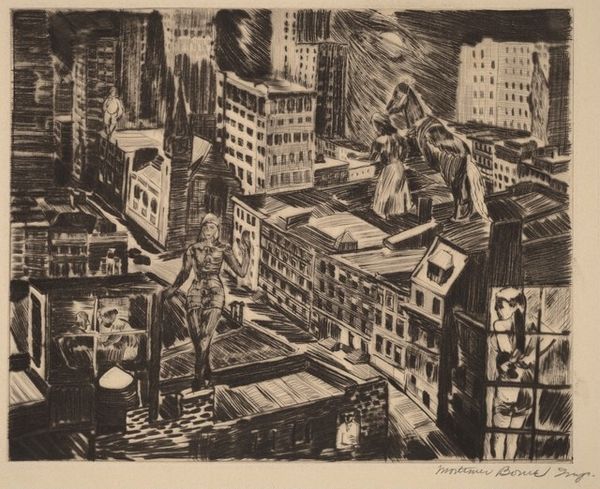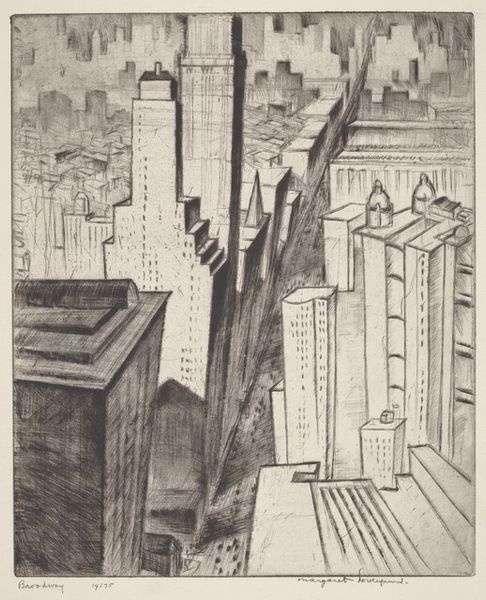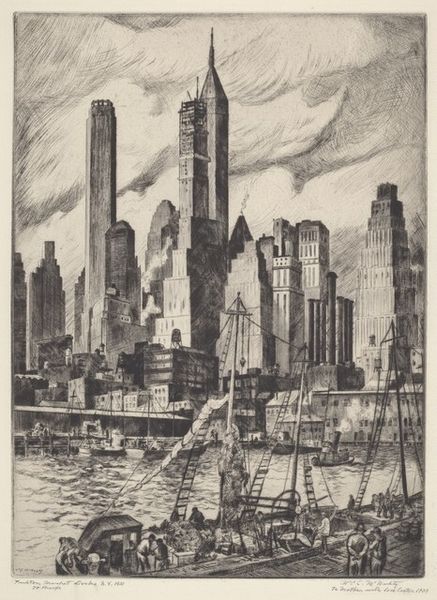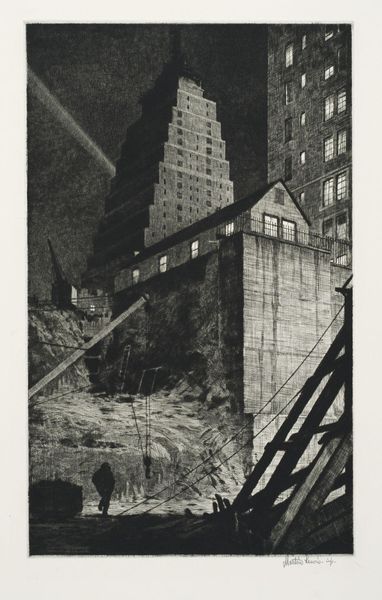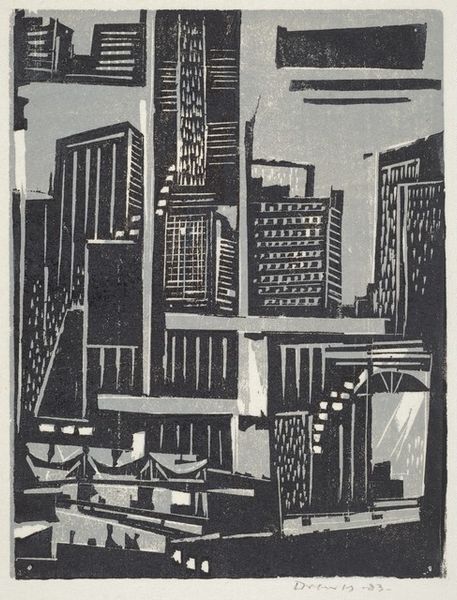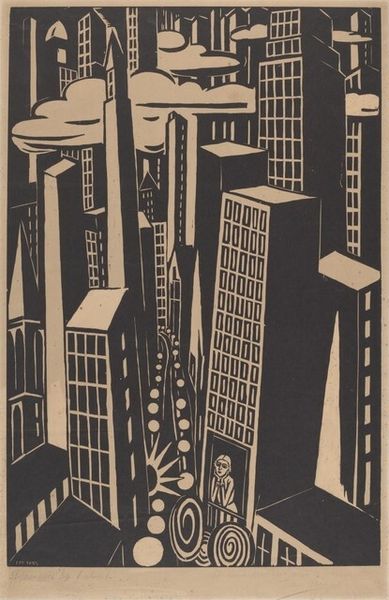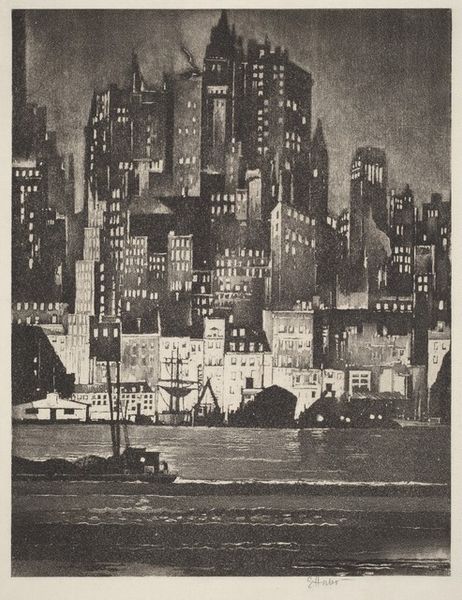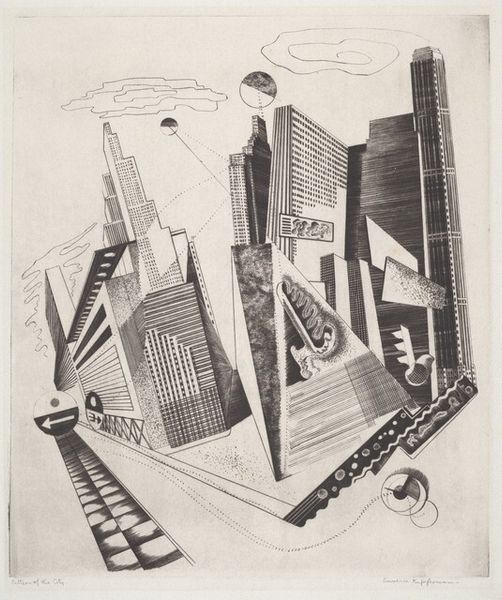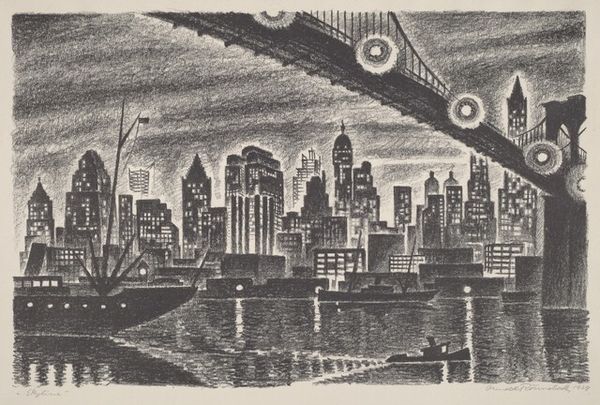
print, etching
# print
#
etching
#
cityscape
#
modernism
#
realism
#
monochrome
Dimensions: Image: 278 x 226 mm Sheet: 347 x 286 mm
Copyright: National Gallery of Art: CC0 1.0
Editor: This etching by William Sharp, "Blue Monday (34 Street, Chanin Building)," was made between 1945 and 1946. It's a somber cityscape, with looming buildings and dark shadows. What strikes you most about its social or cultural context? Curator: The title itself is suggestive, isn’t it? “Blue Monday” in postwar New York evokes a specific working-class experience. This isn’t a glamorous view; it's a look at the city’s underbelly. Look how the artist juxtaposes the grand architecture of the Chanin Building with the mundane reality of the laundry line. What does that contrast say to you about how urban spaces are experienced differently depending on your social standing? Editor: I see what you mean. The clean lines of the skyscrapers against the grimy foreground…it highlights a disparity. It feels like Sharp is making a statement about class divides, especially in a time of supposed postwar prosperity. Curator: Exactly. And the fact that it’s a print, a medium historically associated with mass distribution, makes me think about its intended audience. Was Sharp trying to bring this perspective to a wider public, challenging idealized representations of urban life that might appear in more ‘high art’ forms? Think about the role of public art during that time – what expectations were there, and how might Sharp be playing with or against those expectations? Editor: So, he's using realism to subvert the usual picture of success, bringing the realities of everyday life into the frame. It gives a new meaning to those monumental skyscrapers, more so a symbol of exclusion than a point of aspiration. Curator: Precisely. It's about questioning whose stories are told, and how those stories are visualized and circulated. Consider who gets to shape the narrative of the city. Editor: I never thought about cityscape art having so many socio-political layers. Curator: It always does. Art is never just about aesthetics; it reflects and shapes our understanding of the world and who we are in it.
Comments
No comments
Be the first to comment and join the conversation on the ultimate creative platform.
